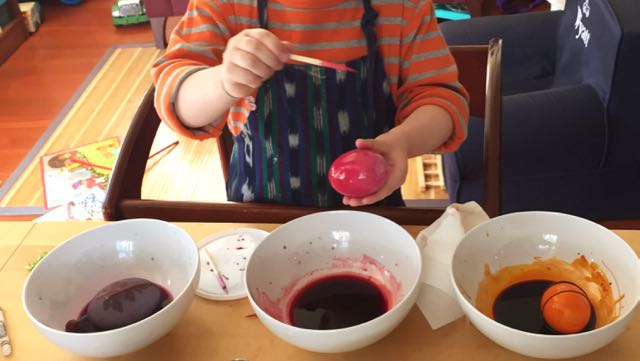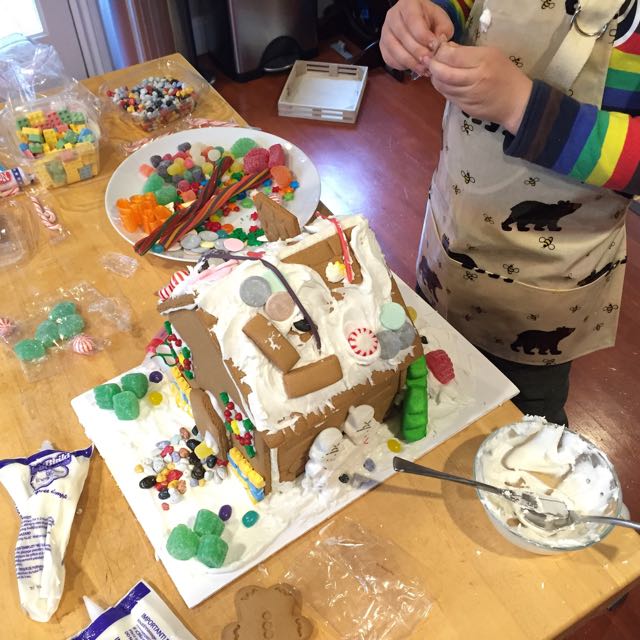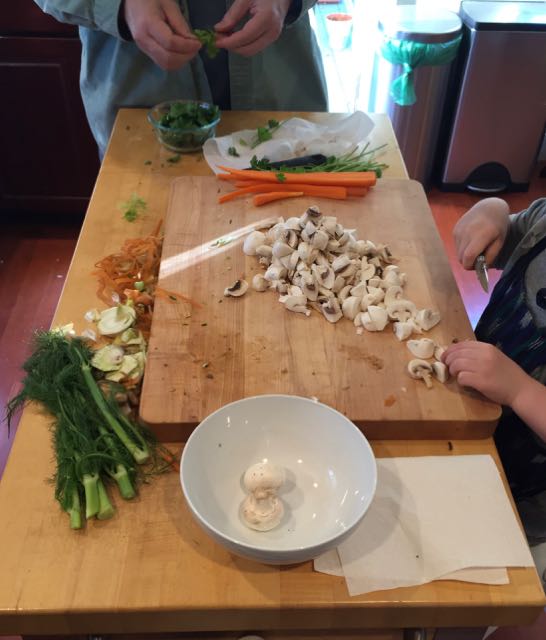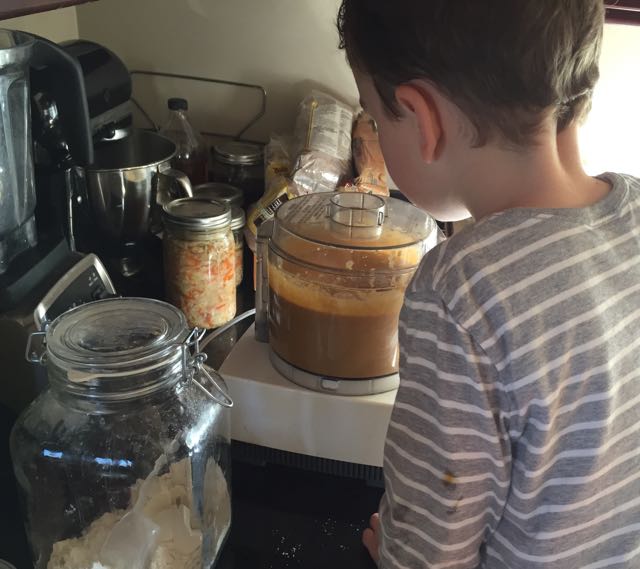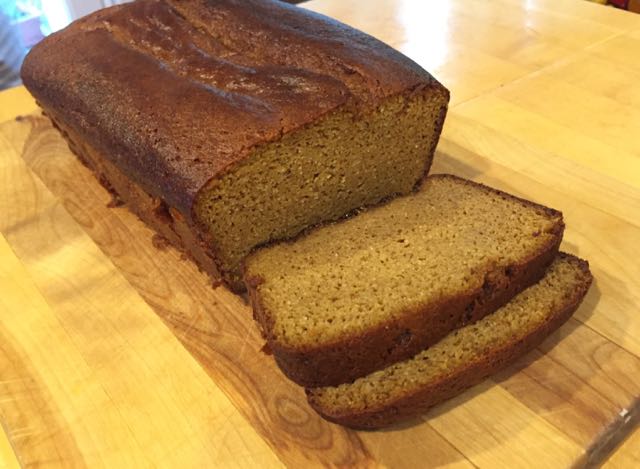Adventures in Natural Egg Dyeing
"Mom. My teacher told me you can make egg dye with all kinds of things. Like beets, parsley and red cabbage."
"Yes! We did that the first year I dyed eggs with you. Do you remember?"
"No."
"You were pretty little. We can do that again this year if you want. It would be fun. We'd make the dyes, arrange the eggs in the dye, and they could sit overnight in the egg dye."
"That's okay. I'm good. Can you just buy the package instead?"
This conversation happened on Sunday morning, even before any of us had really committed to getting out of our pajamas. My answer was, of course, a resounding, "YES." I could absolutely buy the package of dye, if only to celebrate the moment when my child basically requested that for once, we not do something the hard way.
Yellow onion skin produced the orange, beets made magenta, and blueberries the variegated purple. On the end, one faintly green egg was from parsley, and the pale yellowish one was from cumin.
We dyed eggs every year when I was a kid, with double doses of PAAS tablets, probably so the color would get darker faster. I hardly ever dyed Easter eggs as an adult, and for Wyatt's first two Easters, I didn't dye any eggs as a parent, either. Our first attempt at egg dyeing was in 2013. And when I say "our" I mean "my." That year, I decided I would attempt using natural dyes, and I Googled my way to whatever "recipes" I could find. Because the instructions I found were so imprecise and apparently untested (otherwise known as "terrible recipes" or "ideas! for egg dyeing! with stuff you can find in your house!"), the process was time-consuming, a little smelly (don't try to dye with cumin) and somewhat aggravating.
Accordingly, in 2014, I bought a natural dye kit so I could compare our results with my experience the previous year, and so that Wyatt could participate without having to wait hours to get colored eggs. The results were fast—we got color within minutes rather than hours. And the colors were bright, too. It was a fun project to do with a toddler. So I bought the same kit in 2015, and it looks like we'll be revisiting it again this year.
Before this morning's egg dyeing conversation, I had toyed with trying the homemade natural dyes again. Since February, I have been mostly remembering to keep the skins from yellow onions I use for cooking. Of the dyestuffs we tried in 2013, onion skins, beets, and frozen blueberries were our winners. (The losers were cumin, parsley and red wine.) And while it sounds like we're committed to going the kit route again this year, I read a great tutorial just this morning on homemade natural egg dyes. Unlike all the "recipes" I read in 2013, this author notes that the eggs have to sit in the color at least overnight to gain a deep hue on their shells. And she used hibiscus powder! If I run across any of that, I think we may try at least hibiscus-dyed eggs along with our kit.
The explanation in the tutorial of how to make flower silhouette prints on the eggs is also excellent. If you've already got pressed, dried flowers for this project, more power to you. We don't. We did, however, use a a similar approach last year, after gathering fresh leaves from our garden, and we got some pretty prints on our eggs. Flat leaf parlsey worked well. Place the leaves on the egg before dyeing and secure with pantyhose tied around the egg, then add the egg-in-hosiery to the dye. Remove the egg when you reach your desired color, and then carefully remove the pantyhose and leaves. You can also make fun designs by using different thicknesses of rubber bands, wrapped different ways around the eggs before dyeing.
Last year, our first challenge for egg dyeing was finding pasture-raised eggs that were white. We never found any, and I ended up buying pasture-raised duck eggs instead. Looking at the photos from the tutorial, though, I wonder if we might do fine with eggs that aren't white. Eggshell color may be our experiment for this year.
The other important question with egg dyeing is of course, "How long do you boil your eggs?" It's a critical question to answer if you like to eat the eggs you color. For the last few years, we have been making Easter Egg Salad with our colored eggs.
I love to eat eggs all kinds of ways, and I like them cooked perfectly. Overcooked hard boiled eggs don't cut it for me. In fact, I think being able to make great hard boiled eggs is an excellent reason to own a circulator. But if you, like me, don't have a circulator, here is a recipe that will get you very close to perfection.
Do you have egg dyeing tips, tricks or stories? Please share them in the comments.



